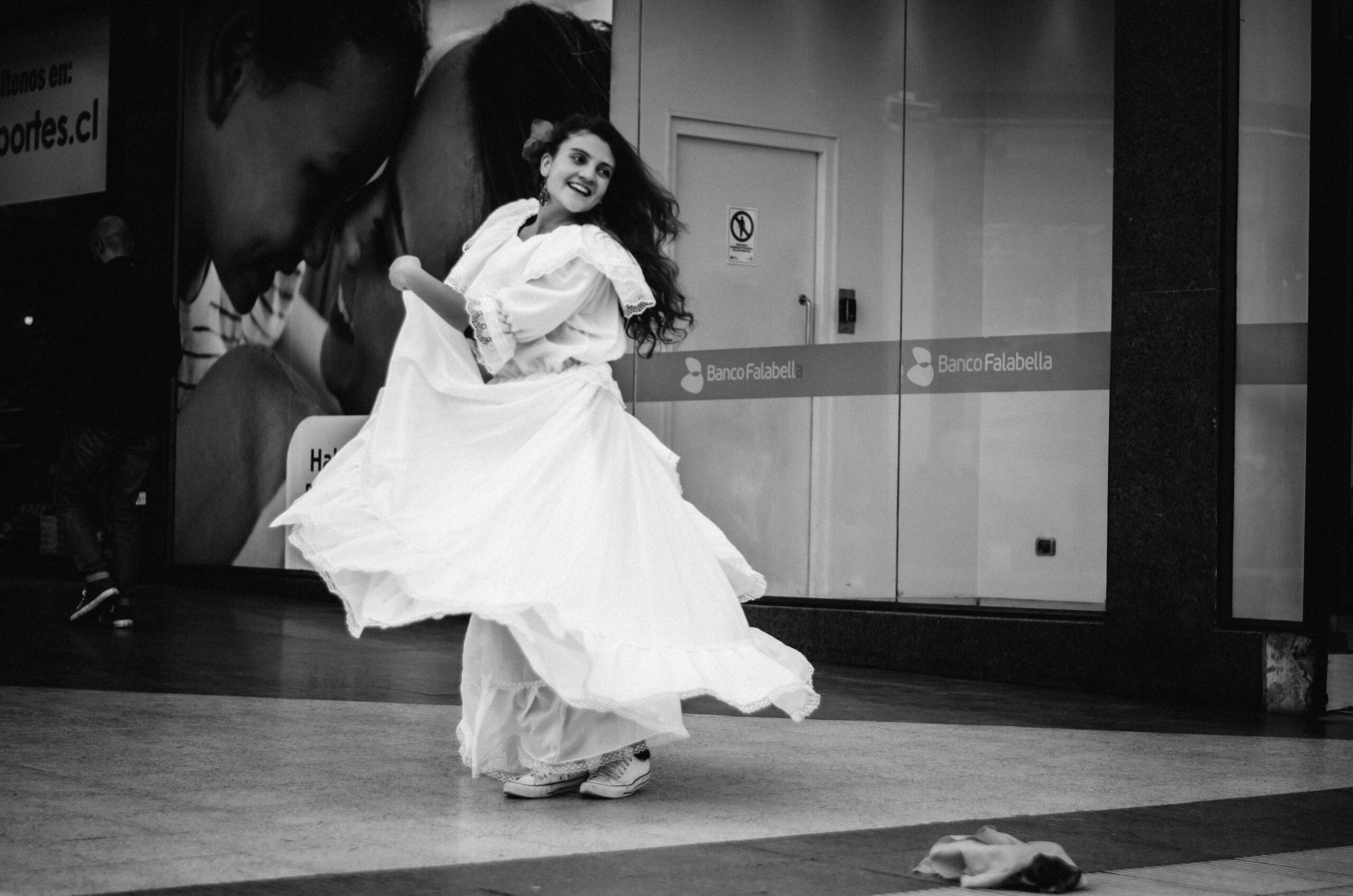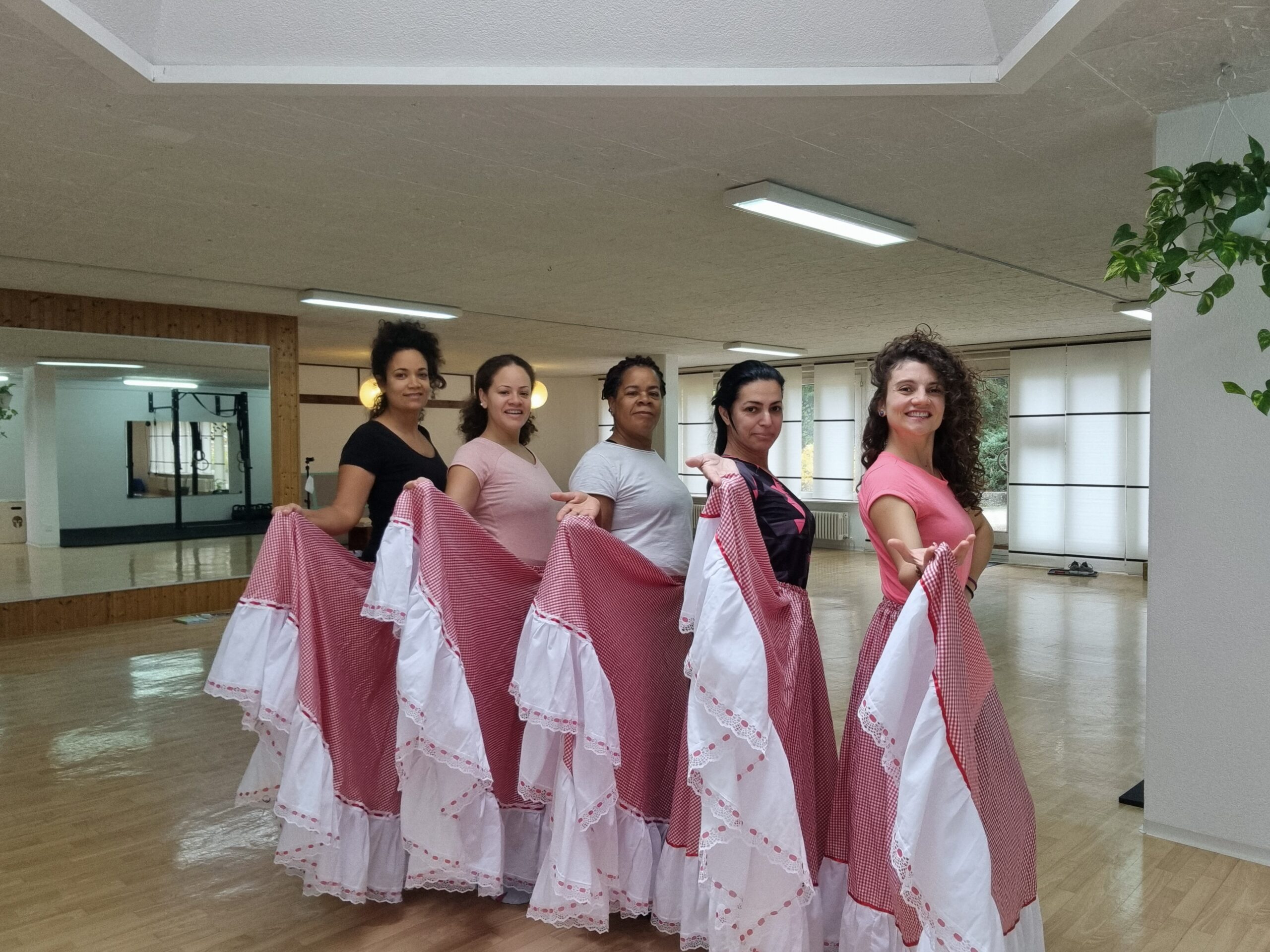Afro-Colombien's Dances
In these classes, you will discover dances from a country rich in culture and traditions.
With African, Indigenous, and European influences, Colombia has created its own rhythms and dance styles.
During the classes, you will learn the technique of la cumbia, la salsa caleña, la champeta, el mapalé y el bullerengue., do some fitness exercises, and also enjoy moments of relaxation through dance.
Dance as ritual, expression, and transformation
Dance has its roots in ancient rituals, where the body told stories and expressed emotions.
It is a creative and transformative act that reconnects us with ourselves and with others.
It is also a discipline that is learned through practice.
In these classes, you explore body awareness: posture, weight distribution, breathing, rhythm, and balance.
Through technical exercises, choreographed sequences, and improvisation, you strengthen your body and gain precision and freedom.
Technique becomes a tool in the service of expression and inner transformation.
Come dance, learn, and evolve in a welcoming space where every movement matters.

Our inspiration

MAPALE
Mapalé is an Afro-Colombian dance named after a fish known for its quick and agile movements. Originally, this dance symbolizes the struggle and celebration of Black fishermen who mimicked the fish’s movements when caught in nets, out of the water. The lively, powerful, and rhythmic movements of Mapalé reflect the strength, endurance, and joy of life of Afro-descendant communities. It is a dance full of energy, combining flexibility, speed, and expressiveness, embodying a rite of passage and a tribute to life. Today, Mapalé is not only a cultural expression but also a dance technique that requires coordination, rhythm, and body control, while inviting freedom and creativity.
BULLERENGUE
Bullerengue is a dance originating from the Colombian Caribbean coast, characterized by its sung aspect. Traditionally, it has been passed down from generation to generation, although nowadays Western methods are also used for learning it. This dance was part of puberty initiation rites, symbolized the resistance of enslaved people, and celebrated their freedom. Today, it is also a highly appreciated festive music. Beyond being a ritual dance, Bullerengue plays a role in midwifery practices, where it is used to guide childbirth and relieve menstrual pain. It is even said that this dance begins in the womb. Bullerengue thus embodies a deep connection with femininity, life, and cultural resistance, blending singing, rhythm, and movement into an authentic and powerful expression.


CUMBIA
The Colombian Cumbia dance requires a rhythmic sway of the hips with every step. Born on Colombia’s Caribbean coast, it quickly spread throughout South America, with each country adapting the rhythm to its own cultural influences. Cumbia is a lively dance that blends sensuality and joy of life. It reflects a unique mix of African, Indigenous, and European influences, evident in its movements, rhythms, and colorful costumes. This traditional dance is much more than just entertainment: it is a true cultural expression, a living link between past and present, celebrated at festivals and popular gatherings.
SALSA
Caleña salsa was born in the streets of Cali, where music and dance are part of everyday life. Inspired by Afro-Cuban rhythms, this style became something unique: fast, precise, and full of energy. More than a dance, it’s a cultural tradition that reflects the identity of a city. With its quick footwork and powerful stage presence, Caleña salsa has reached stages around the world without losing its popular roots. Today, it lives on in schools, in the streets, and in the hearts of those who carry it as part of their history.


CHAMPETA
Champeta was born on Colombia’s Caribbean coast, especially in Cartagena and Palenque, as a form of expression for Afro-descendant communities. Inspired by African music brought by ships in the 1970s and 80s, it blended with local sounds to create a unique style—full of rhythm, energy, and joy. The picós—huge sound systems—took champeta to the streets, turning it into a symbol of identity, resistance, and cultural pride. Once seen as marginal, today it’s a living celebration of Afro-Colombian roots.
To conclude, the word DANCE is used in its broadest sense.
The elements of our inspiration provide many tools to dance from a holistic and integrative perspective, combining artistic and therapeutic aspects.
Dance is an instrument of transmutation and transformation of emotions, a resource to experiment with and discover new sensations.
*Therapeutic does not mean psychological or medical therapy. We said therapeutic because it helps well-being, relaxes, guides and accompanies.

